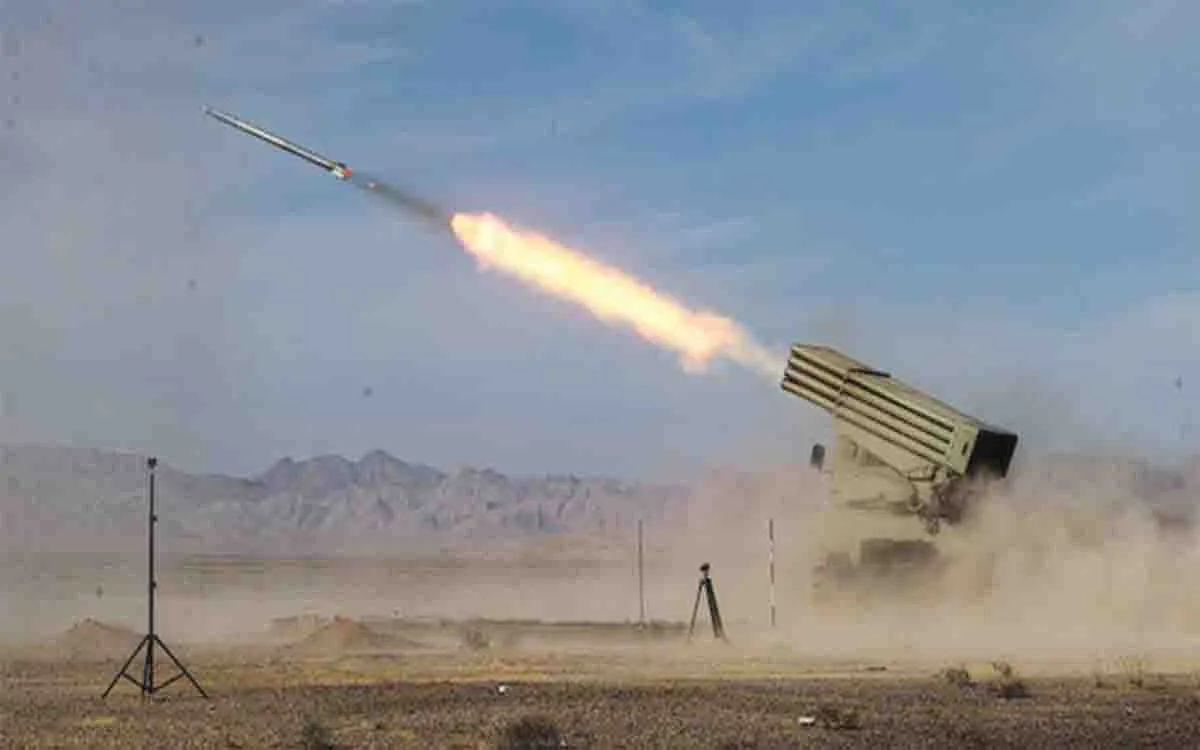New Delhi, Apr 19: In the early hours of Friday morning, Iran’s air defence systems were activated in response to explosions heard near Isfahan’s airport and an army base, as reported by state media.
Although Israel has not claimed responsibility for the incident, three explosions were reported near a military base housing a fighter jet in the northwest part of Isfahan, according to Iranian semi-official FARS news and multiple American media outlets.
Iranian state television has reported the downing of three drones over Isfahan, providing further details on the incident. Around 12:30 AM GMT, three drones were spotted in the sky above Isfahan, prompting the activation of air defence systems which successfully neutralised the drones in the airspace.
Iranian officials, including spokesperson Hossein Dalirian from the National Centre of Cyberspace, have denied any missile attacks on Isfahan or other parts of the country. Dalirian stated that Israel’s purported involvement was limited to a failed attempt to deploy quadcopters, which were subsequently shot down.
While Iranian state media confirmed the activation of air defence systems across the country to engage potential threats, there were no reports of direct impact or explosions, and all facilities, including nuclear sites, were declared safe. The Iranian Foreign Ministry condemned what it termed an “Israeli attack” on Isfahan. Still, a senior official informed Reuters that there were no immediate plans for retaliation, citing uncertainty regarding the source of the incident.
Despite the unrest, Isfahan is set to host a demonstration in solidarity with Gaza’s residents shortly after the reported explosions, according to the Iranian Students’ News Agency (ISNA).
Brigadier General Siavash Mihandoost, the military chief in Isfahan, confirmed that no accidents or damages were reported in the city following the explosions. ISNA further reported that operations at Isfahan’s Shahid Beheshti Airport have returned to normalcy.
Oman Joins Condemnation of Israel’s Military Actions in the Region
Oman has issued a statement condemning Israel’s repeated military attacks in the region, emphasizing its longstanding role as a mediator between Iran and Western countries.
According to Syria’s official news agency SANA, missile strikes in the early hours of the morning caused material damage to air defence sites in the country’s southern region, as quoted by a military source. I
Iran Heightens It’s Alert
In response to Israel’s announcement of retaliation against any Iranian attack on Saturday night, Iran has heightened its alert status. Initial reports suggest that the army radar might have been a potential target, with several nearby office buildings experiencing broken windows.
State news agency IRNA reported that flight operations have resumed at Tehran’s Imam Khomeini International Airport. Additionally, Iran’s civil aviation organization announced the lifting of restrictions at several other airports, as reported by Tasnim, a semi-official news agency. Earlier reports from state-run Mehr TV indicated that airports in Tehran, Isfahan, Shiraz, and other regions in the West, Northwest, and Southwest of Iran had been affected.
However, the cause of the blasts remains unknown. These developments come after a warning from Iran’s Foreign Minister, Hossein Amir-Abdollahian, who promised an immediate and maximum-level response to any further military action by Israel.
Meanwhile, according to US broadcaster ABC News, Israel reportedly launched a missile attack targeting a site in Iran. Iranian state media reported explosions in Isfahan province, leading to the suspension of flights in several cities.
A US official told CNN on Friday that Israel had carried out a strike inside Iran, further escalating conflict in the Middle East. When asked by CNN about reports of explosions in Iran, the Israeli military stated they “don’t have a comment at this time”.
Israel’s war cabinet has met periodically this week without announcing any definitive action following Iranian strikes on Israel last weekend. This escalation occurs amid heightened tensions in the region, characterized by recent clashes between Iran and Israel, including an Israeli attack on Iran’s consulate in Syria earlier this month, which was retaliated by Iran’s drone and missile attack last week on Israel.







